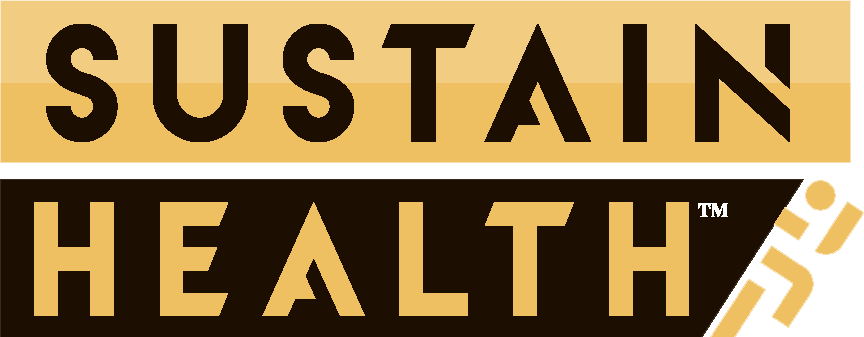When it comes to achieving those chiselled, Hercules-worthy muscles or simply enhancing strength and endurance, muscle hypertrophy is the golden ticket.
But what exactly is hypertrophy, and why does it matter to athletes and gym enthusiasts alike?
What Is Muscle Hypertrophy?

At its core, muscle hypertrophy refers to the growth and increase in the size of muscle cells. It’s the reason your biceps bulge after consistent weightlifting or why your legs can handle steep hikes without trembling like jelly.
Essentially, hypertrophy enlarges tissues and organs by increasing the size of their cells—not to be mistaken for hyperplasia, which involves adding more cells to the mix.
This cellular growth can be a force for good—or not. When hypertrophy happens due to exercise and physical training, it’s considered physiologic hypertrophy, the good kind.
Conversely, pathologic hypertrophy is linked to health conditions, such as an enlarged heart due to high blood pressure, and it’s best left out of your fitness goals.
The Proven Science of Hypertrophy
So, is hypertrophy just a fancy buzzword in fitness circles, or does science back it up? Rest assured, it’s the real deal.
Studies confirm that hypertrophy occurs in response to resistance training, particularly weightlifting. This type of training creates micro-tears in your muscle fibres, prompting the body to repair them stronger and larger.
Think of it as your body’s natural renovation project, turning your muscles into a high-performance machine.
Why Does Muscle Hypertrophy Matter?
The benefits of hypertrophy training extend far beyond the vanity of bigger muscles. Here are three standout reasons why it’s worth incorporating into your fitness routine:
1. Increased Muscle Size and Strength
At its simplest, hypertrophy training grows your muscle fibres, making them bigger and stronger. The result?
Greater power output, whether you’re lifting weights, sprinting, or simply carrying groceries up the stairs.
For athletes, this translates to enhanced performance and the ability to handle more demanding training cycles.
2. Injury Resistance
Stronger muscles aren’t just about lifting heavier weights—they also provide better support for your joints, reducing the risk of injuries.
Improved blood flow and physiological adaptations from hypertrophy training ensure that your body is better prepared for the physical challenges it faces.
3. Enhanced Readiness for Advanced Training
Hypertrophy lays the groundwork for more intense and specialized workouts. For beginners and intermediates, working within moderate to higher rep ranges helps build muscle mass, endurance, and a solid foundation for progressing to advanced strength or power training.
How to Train for Muscle Hypertrophy
Now that we’ve established why hypertrophy matters, let’s dive into how to achieve it. For most gym-goers, hypertrophy training typically involves moderate weights and repetitions, striking a balance between intensity and volume.
Beginners and intermediates can see noticeable gains simply by focusing on structured routines with higher rep ranges.
Here’s a sample 12-week hypertrophy training plan you can follow, focusing on foundational lifts like the bench press, squat, and deadlift.
This program incorporates “load” weeks for progressive overload and “unload” weeks for recovery, allowing your muscles to adapt and grow over time:
Hypertrophy Training Plan
Week 1 (Load): 2×10 reps at 60% of your one-rep max (1RM)
Week 2 (Load): 3×10 reps at 65% 1RM
Week 3 (Unload): 3×10 reps at 60% 1RM
Week 4 (Load): 3×10 reps at 70% 1RM
Week 5 (Load): 3×5 reps at 70% 1RM
Week 6 (Load): 3×5 reps at 75% 1RM
Week 7 (Unload): 3×5 reps at 70% 1RM
Week 8 (Load): 3×5 reps at 80% 1RM
Week 9 (Load): 3×3 reps at 70% 1RM
Week 10 (Load): 3×3 reps at 75% 1RM
Week 11 (Unload): 3×3 reps at 70% 1RM
Week 12 (Load): 3×3 reps at 80% 1RM
By week 12, your muscles should have undergone significant hypertrophy, enabling you to lift heavier weights than you did in week 1. Progress is a key indicator that your training plan is working.
Tips for Maximizing Muscle Hypertrophy
Focus on Compound Movements
Exercises like squats, deadlifts, bench presses, and pull-ups recruit multiple muscle groups, making them the cornerstone of hypertrophy training.
Progressive Overload
Continuously challenge your muscles by gradually increasing the weight, reps, or intensity of your exercises.
Adequate Recovery
Muscles grow during rest, not while you’re hammering away in the gym. Ensure you’re giving your body enough time to recover between sessions.
Nutrition Matters
To support hypertrophy, fuel your body with enough protein, healthy fats, and carbohydrates. Protein, in particular, is essential for repairing and growing muscle fibres.
Consistency is King
Results won’t happen overnight. Stick to your plan, track your progress, and stay consistent to see the best results.
Hypertrophy for Beginners vs. Advanced Lifters
For beginners and intermediates, almost any structured hypertrophy training will yield results. Your muscles are essentially in a state of “beginner’s luck,” responding quickly to new stimuli.
However, as you become more experienced, you’ll need to fine-tune your approach, incorporating variations in volume, intensity, and exercise selection to continue progressing.
Advanced lifters often periodize their hypertrophy training, dedicating specific blocks of time to building muscle before transitioning to strength or power-focused phases.
The Final Rep
Muscle hypertrophy isn’t just about aesthetics—it’s a scientifically proven process that enhances strength, reduces injury risk, and sets the stage for advanced fitness goals.
Whether you’re just starting out or you’ve been lifting for years, understanding and applying the principles of hypertrophy can help you unlock your full physical potential.
So, grab those dumbbells, fuel up with a protein-packed snack, and let hypertrophy take your training to the next level.
Just remember, progress takes time, so stay patient, stay consistent, and enjoy the journey.





